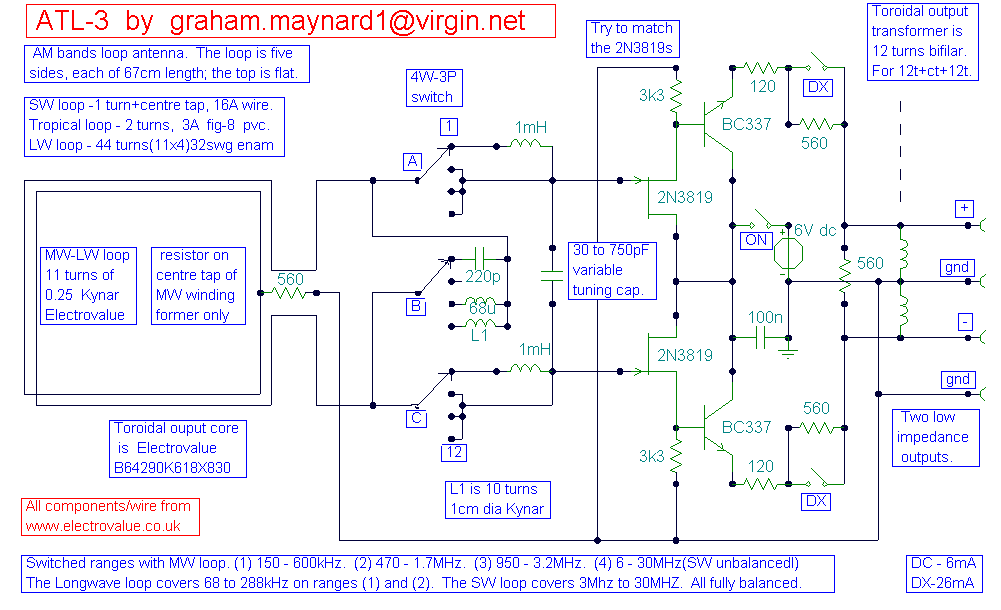The ATL-3 Loop Antenna

This antenna is the result of long term development and user feedback.
All ATL-3 loop windings are centre tapped and balanced w.r.t. their amplifier/receiver chassis ground, and therefore electric field
interference pick up tends to self cancel. Magnetic noise fields,e.g. televisions and the electric meter box, or electromagnetically
radiated interferences, may be minimised by loop rotation. Where the received noise does not degrade wanted station reception, an indoor
active loop can be very rewarding.
Tuned winding antennas always have a potential 6dB greater signal sensitivity, and provide a better signal to noise ratio than equally sized broadband designs; thus a much larger broadband loop area becomes necessary to better the performance of the standard 40 inch frame loop with d.m.a., or an ATL-3. Note that the switched ATL-3 amplifier circuit will work just as well from 150kHz to 3MHz with a seven turn 40" MW box loop, by simply extending a ground connection to a centre tap at the middle of the winding. 40" loop construction details are already available from MWC reprints.
ATL-3 loop windings are in the shape of a five 65cms. (26inches) sided spiral with flat top, so that they won't bash your radio when you rotate them. Winding turns are 2mm. spaced for the 11 turn MW loop,with the centre tap 5t. in from the outside edge; the excellent 44 turn LW winding is comprised of 4 turns per eleven 2mm. spaced slots. Loop corner formers can be made from sections of unclad 0.1 inch matrix board from Electrovalue, with the turns fixed in place with varnish or paint after winding, but before use.
Do try combining your loop signal with the signal from an outdoor wire or active whip antenna. Whatever your loop gain, it can be doubled in one direction in line with the loop, with deep nulling in the opposite direction......just what UK Dxers need to counter strong night-time EU skywaves. The controls do not need to be complicated, see the circuit drawings below.

Source:www.zen22142.zen.co.uk






